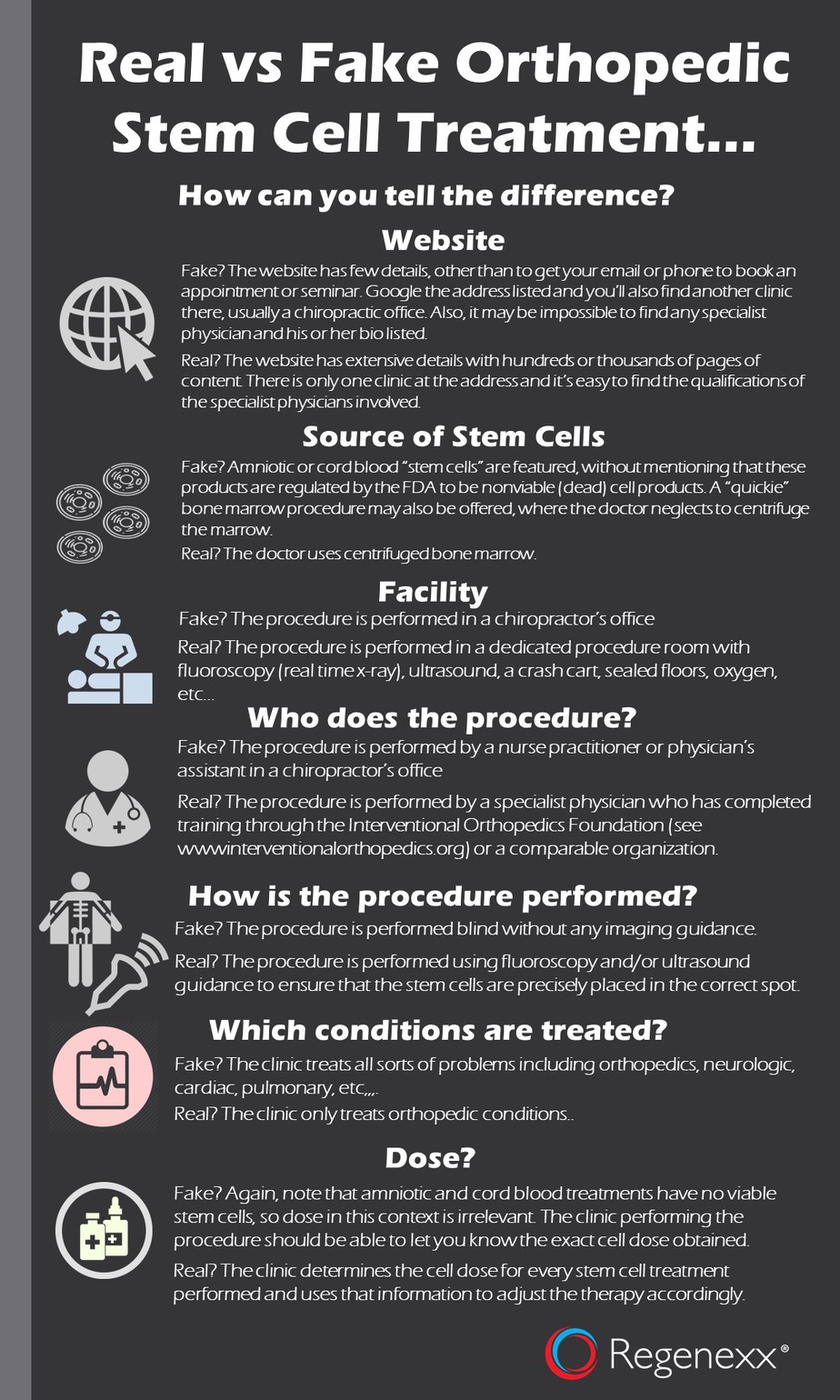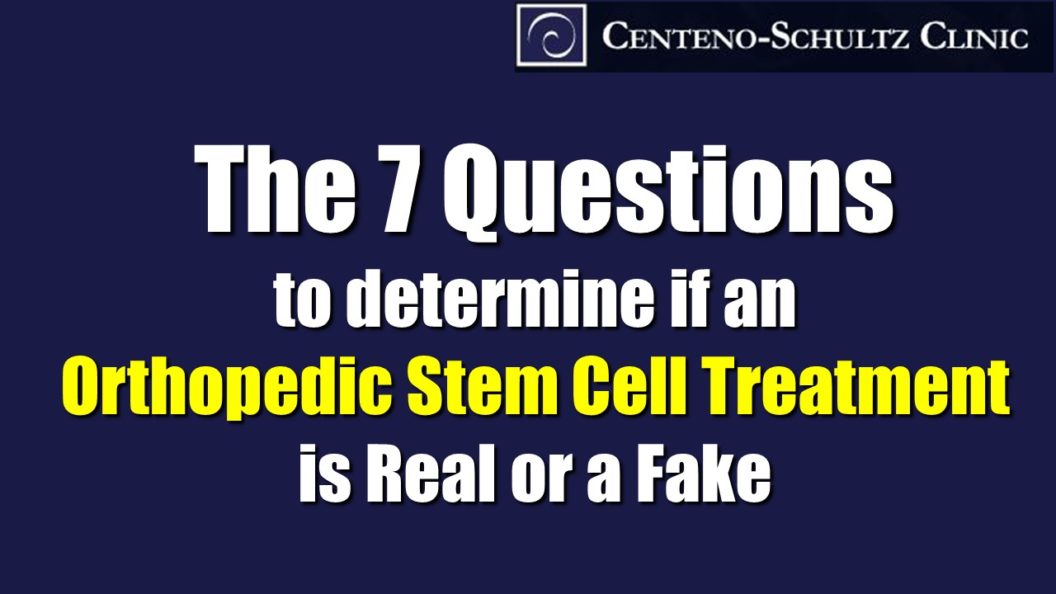So many people these days are, justifiably, looking for alternatives to surgery and other traditional treatments. As is the norm with supply and demand, clinics offering stem cell treatments have been popping up all over the place in recent years. However, when it comes to orthopedic stem cell treatments, very few are actually qualified to properly perform these procedures. The problem for patients, naturally, is determining which ones are legitimate.
In our last post, we explained how to tell if an orthopedic stem cell treatment is the real deal. Today, we’re going to venture over to the other end of the spectrum and explain how to tell if an orthopedic stem cell treatment is fake (click on the infographic to the right to get a real vs. fake comparison).
Study the Website
If a website is filled with plugs about the clinic’s stem cell seminars, this is your first giant red flag. These seminars are usually just very aggressive sales events intended to get you to sign on for their stem cell treatments. Additional website issues that should concern you about whether the orthopedic stem cell treatment is fake include the following:
- Very limited information on the clinic’s treatments but an abundance of information on how to book at appointment
- No research references, or research references that do not apply to the treatments provided (e.g., same stem cell source, processing methods, treatments, etc.)
- A chiropractic clinic at the same address listed on the website (Google the physical address given on the website to determine this)
- No information on the person who provides stem cell treatments, or a bio that is lacking (no research publications, no orthopedic stem cell qualifications, etc.) or seems a bit off (again, Google the physician to see what else you can learn)
Know the Stem Cell Source
If a clinic is using birth-tissue products (e.g., amniotic or cord blood) for orthopedic stem cell treatments, this is a sure sign the treatment is fake. The FDA regulates these products as only nonviable cell products, meaning they contain no living stem cells. If the stem cell source is not mentioned on the website or in other clinic materials (though they may mention them at their seminars), it’s very possible the clinic is using these dead cell products.
Orthopedic stem cell treatments should come from the patient’s own bone marrow stem cells, and it should be clear from the website that this is the stem cell source used. Be careful, however, as there is a difference between a same-day bone marrow stem cell treatment (what you want) and a quickie bone marrow stem cell treatment (what you don’t want). These quickie treatments utilize a technique that claims to eliminate the need for isolating and concentrating the stem cells in the bone marrow harvested. If the stem cells are reinjected within a few minutes of the bone marrow draw, this is a quickie procedure and not what you want.
Learn About the Facility Setup
The biggest red flag here? The stem cell treatment is performed in a chiropractor’s office. In addition, if a clinic does not have the necessary equipment, such as injection guidance (e.g., ultrasound and fluoroscopy machines), a standard emergency setup (crash cart, vital signs monitor, oxygen, etc.), cleanliness and sanitation techniques, and so on, it can’t provide a safe environment in which to perform orthopedic stem cell treatments.
Know Who Performs the Procedure
Chiropractors, physician assistants, nurse practitioners, acupuncturists, and so on are not qualified to perform orthopedic stem cell procedures. Only physicians with extensive training by the Interventional Orthopedics Foundation (IOF) are qualified to perform orthopedic stem cell treatments.
Find Out How the Procedure Is Performed
If the procedure is performed without imaging guidance, also termed “blind,” this is not the proper way to inject stem cells into musculoskeletal structures. Why? Orthopedic stem cell treatments require injections into precise locations, and blind injections can’t accomplish this.
Review What Conditions the Clinic Treats
If the clinic seems treat every medical problem that exists (e.g., diabetes, ALS, heart failure, arthritis, etc.), it can’t possibly be a specialist in orthopedic stem cell treatments. You can often find this information on their website as many of these clinics like to advertise all the body systems they can treat. If the clinic isn’t dedicated to orthopedic treatments only, find one that is.
Find Out How the Clinic Doses Your Stem Cells
If the clinic uses standardized one-size-fits-all dosing, this is not good. A clinic that performs orthopedic stem cell treatments must be able to customize treatments and dosing to meet each patient’s needs. Read more about this on our prior post “How to Know if an Orthopedic Stem Cell Treatment Is the Real Deal.”
Now you have a good starting point for helping you decide if an orthopedic stem cell treatment is fake or the real deal. If you are not in Colorado and the Centeno-Schultz Clinic isn’t an option, another helpful source for finding physicians trained in orthopedic stem cell treatments is the IOF membership directory.
